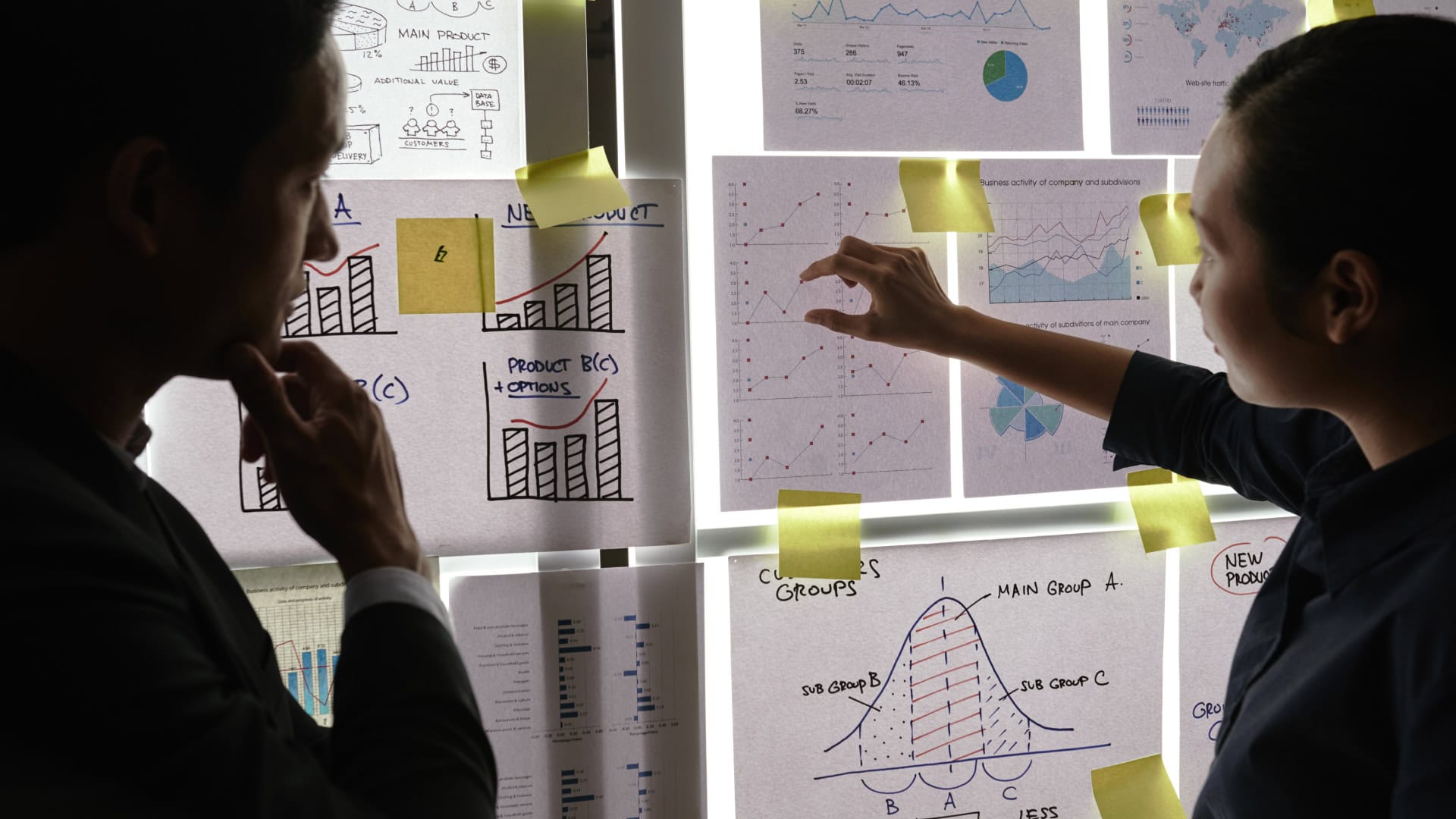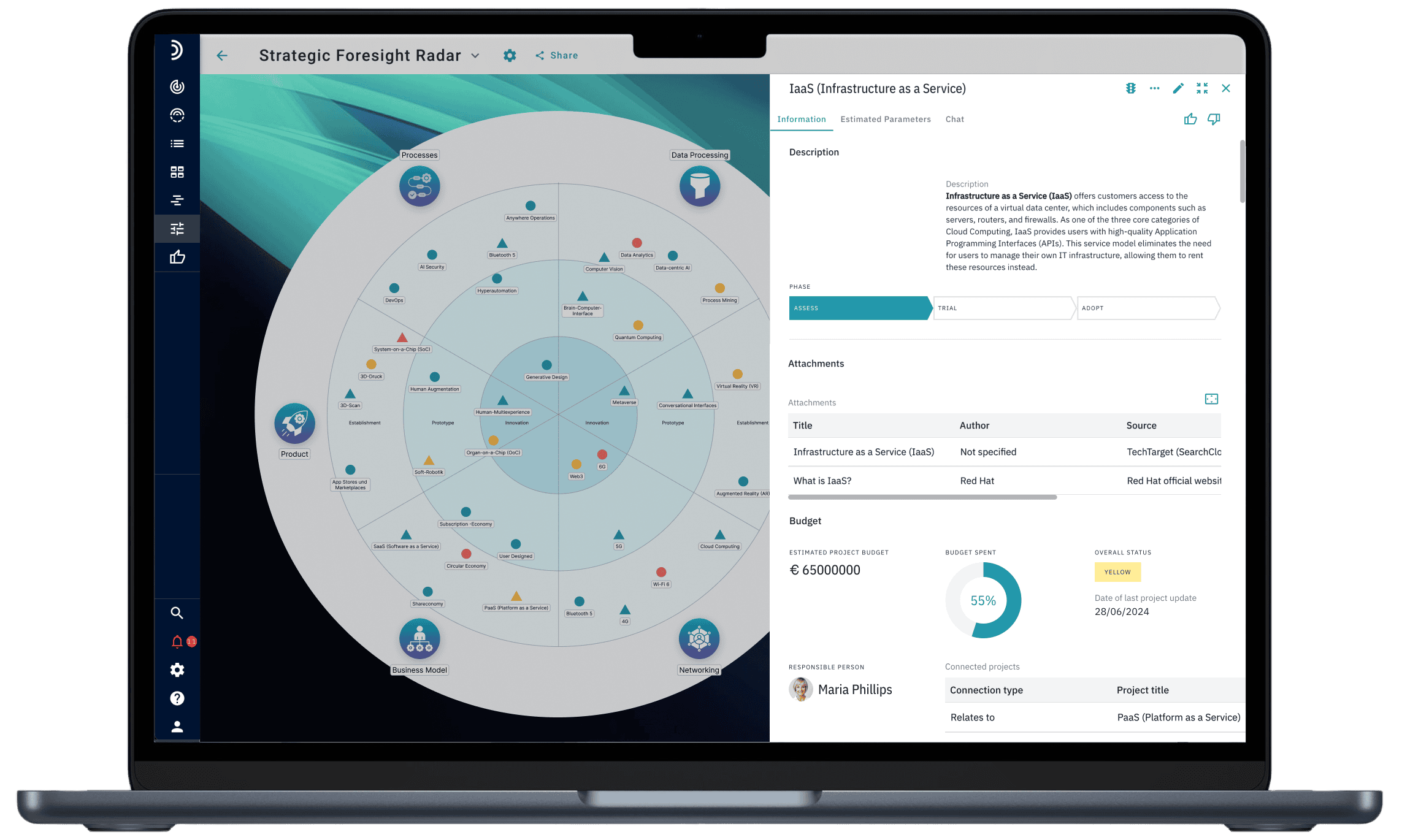Strategic Foresight Tools and Techniques: Trend Analysis, Delphi Method, and More
This article explores some of the most powerful tools and techniques in the realm of strategic foresight. We also highlight how Projects Radar can enhance foresight practices.
What is Strategic Foresight?
Strategic foresight refers to the systematic exploration of possible futures to inform decision-making in the present. It differs from traditional forecasting, as foresight isn’t about predicting a single outcome but rather understanding a range of potential futures and preparing for them. It helps organizations navigate uncertainty by providing frameworks to think creatively and systematically about long-term possibilities.
Key Tools and Techniques for Strategic Foresight
1. Trend Analysis
Trend analysis is a foundational tool in strategic foresight, focusing on identifying and understanding shifts in social, technological, economic, environmental, and political domains (STEEP analysis). This technique helps organizations anticipate changes that can disrupt industries or present new opportunities.
Trends can be classified as:
- Megatrends: Long-lasting, large-scale trends affecting the global context (e.g., climate change, aging populations, digital transformation).
- Microtrends: Emerging, smaller-scale trends that could evolve into broader shifts (e.g., decentralized finance, plant-based diets).
To successfully leverage trend analysis, foresight practitioners gather and analyze data from various sources, such as industry reports, market data, expert insights, and even social media sentiment. The goal is to identify patterns or tipping points that could shape the future.
Projects Radar, a cutting-edge digital foresight tool, can significantly enhance the trend analysis process by aggregating vast amounts of data, and providing real-time analytics. Its ability to visualize and map emerging trends makes it an ideal platform for organizations looking to monitor and adapt to future developments effectively.
2. The Delphi Method
The Delphi Method is a structured communication technique used to gather and refine expert opinions on future developments. It was developed in the 1950s by the RAND Corporation and remains a popular technique for future-oriented decision-making.
The Delphi process typically involves the following steps:
- A panel of experts is selected based on their knowledge of the subject.
- These experts are asked to provide their opinions on future events, trends, or scenarios.
- Their responses are collected anonymously, and a facilitator synthesizes the results.
- Based on the feedback, experts revise their opinions in subsequent rounds, with the process repeating until a consensus or clear trend emerges.
One of the key benefits of the Delphi Method is that it minimizes biases associated with groupthink or dominant personalities. The iterative nature of the process ensures that diverse viewpoints are considered, and collective wisdom is distilled into actionable insights. However, the method requires time and expertise to execute effectively, which is where Projects Radar can streamline the process by managing expert interactions and data collection.

3. Scenario Planning
Scenario planning involves constructing multiple, plausible future scenarios that describe how the world might evolve based on different assumptions and driving forces. This technique is particularly useful for organizations facing high levels of uncertainty, as it allows them to prepare for a variety of possible outcomes, rather than relying on a single prediction.
The process typically involves:
- Identifying the key drivers of change (economic shifts, technological breakthroughs, regulatory changes, etc.).
- Analyzing the relationships between these drivers and how they might interact.
- Developing multiple divergent yet plausible future scenarios.
- Exploring how these scenarios could impact the organization and identifying potential strategies for each.
Scenario planning encourages organizations to think creatively and prepares them for unexpected changes. It helps them remain agile in the face of disruptions and align their long-term strategies with possible future landscapes.
4. Environmental Scanning
Environmental scanning involves collection and analysis of information from the external environment. Its goal is to detect early signs of change or disruption. This process includes monitoring social, technological, economic, and political factors that could impact an organization.
While related to trend analysis, environmental scanning focuses on being proactive. It identifies emerging signals before they become significant trends. Organizations must stay vigilant and adaptable, always seeking new information that may signal shifts in the competitive landscape or society.
Projects Radar can assist organizations in conducting environmental scans by automating the collection of data from numerous sources, from industry reports and patents to online publications and news.
5. Horizon Scanning
Horizon scanning is an advanced foresight technique. It explores new developments or weak signals that may impact the future. This method looks at long-term trends, disruptive innovations, and potential surprises, often beyond typical industry boundaries.
Organizations use horizon scanning to challenge their assumptions. It helps identify unexpected developments that could disrupt their business. This flexible technique encourages practitioners to explore various domains. They seek innovative breakthroughs, regulatory changes, or shifts in consumer behavior that may shape future outcomes.
Utilizing Technology for Foresight: The Role of Projects Radar
In an era dominated by digital transformation and big data, foresight practitioners need more than just traditional tools to manage the complexity and volume of information. Projects Radar is one of the most advanced digital platforms designed specifically for strategic foresight, offering powerful features that make the foresight process more efficient and effective.

Here’s how Projects Radar supports strategic foresight:
- Data Integration: It aggregates and integrates data from multiple sources, providing a comprehensive view of emerging trends and weak signals.
- Trend Visualization: Projects Radar helps visualize multiple trends and signals, making it easier for decision-makers to explore and understand the potential business impact.
- Collaborative Environment: The platform supports collaboration among stakeholders and experts, streamlining communication during processes like the Delphi Method and scenario planning.
In summary, Projects Radar is a versatile and powerful tool that can enhance the capabilities of any strategic foresight initiative, helping organizations not only understand possible futures but actively shape them.
Meet the Author
Prof. Dr. Ing. Manfred Esser
Take the opportunity to talk to our experts, get insights and advice, or share your initiatives and visions with us! Are you interested in an exchange or a collaboration? Don’t hesitate to contact us and share your ideas with us!
Get started with Radar today
Sign up for a free trial. No credit card required.
Conclusion
Strategic foresight is critical for navigating today’s volatile, uncertain, complex, and ambiguous (VUCA) environment. Whether through trend analysis, the Delphi Method, scenario planning, or more sophisticated techniques like horizon scanning, organizations have a wide array of tools to prepare for the future. Leveraging modern platforms like Projects Radar can significantly boost the efficiency and accuracy of these processes, ensuring that businesses are not only reactive but proactive in shaping their futures. By anticipating change, organizations can stay ahead of the curve, positioning themselves to thrive in an unpredictable world.
